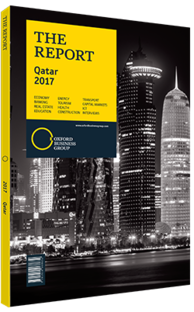Abdul Hakeem Mostafawi, CEO, HSBC Qatar: Interview

Interview: Abdul Hakeem Mostafawi
How have lower oil prices and budget cuts put pressure on deposits and credit availability?
ABDUL HAKEEM MOSTAFAWI: Lower oil prices inevitably impacted market liquidity. Furthermore, activity within the market has slowed down the growth rate in the private sector and impacted retail deposits. Credit growth continues to be healthy with the government’s efforts to maintain capital expenditure. Therefore, banks are paying higher rates for customer deposits, and interbank liquidity has become more expensive, subsequently increasing the cost of credit. Banks are able to pass on some of the higher costs to its borrowing customers; however, larger companies are now engaging with global banks to access international liquidity and capital markets. It is therefore extremely important to carefully manage the liquidity pressures, and robust liquidity management will ensure resilience during more challenging times.
How can a better understanding of the differing benefits of debt and equity assist companies in the region when sourcing capital?
MOSTAFAWI: It is important to note that most clients in the MENA region have historically preferred debt instead of equity when sourcing capital. This is because the former does not give away ownership rights and does not require governance changes in private companies. However, also important is the fact that sovereign issuances can create a benchmark for local issuers, and can pave the way for those to access the market. For example, this is very relevant for Saudi Arabia, where local issuers very rarely tap international investors. However it may be less relevant for countries like Qatar or the UAE, where recurrent issuers do exist outside the sovereign space.
Most big corporates are government-related entities that have been issuing sukuk (Islamic bonds) for quite some time, even when the sovereign has not. However, the recent increase in sovereign issuance has turned the focus of many global investors to the MENA region, which will further increase investors’ interest in buying, and will positively affect smaller corporates.
What are the concerns associated with consumer lending and credit card debt?
MOSTAFAWI: The retail sector in Qatar has always been marginally impacted by non-performing loans (NPLs) due to existing governance and controls. Banks like HSBC have always lent on the basis of sustainable profitability by focusing on upper-market clients and those with cross-border banking needs. This approach minimises the risk and concerns for NPLs. However, the sector has experienced some increase in unpaid debt since 2016 after larger government entities increased efficiency, which impacted employee numbers. Banks with exposure to lower income expatriates were impacted marginally. Credit card debt represents the lowest risk, given the limits imposed by the Qatar Central Bank, which caps credit limits in relation to income.
What structural reforms need to be implemented to realise Qatar’s economic potential?
MOSTAFAWI: The focus on greater efficiency in the public sector has resulted in developments that will improve productivity over the longer term. The announcement of the merger between RasGas and Qatargas is significant and will most likely be the beginning of similar events in the future. Other larger public offices have been restructured to improve operational effectiveness in relation to the use of resources. The introduction of a value-added tax is a significant step in the right direction. With the view of increased efficiency, further reduction in spending might also be required; however, certain commitments towards high-profile events and projects, such as the FIFA 2022 World Cup, will require completion. It is clear there is a lot to consider in order to optimise the economic potential of the country and the wider region.
You have reached the limit of premium articles you can view for free.
Choose from the options below to purchase print or digital editions of our Reports. You can also purchase a website subscription giving you unlimited access to all of our Reports online for 12 months.
If you have already purchased this Report or have a website subscription, please login to continue.

